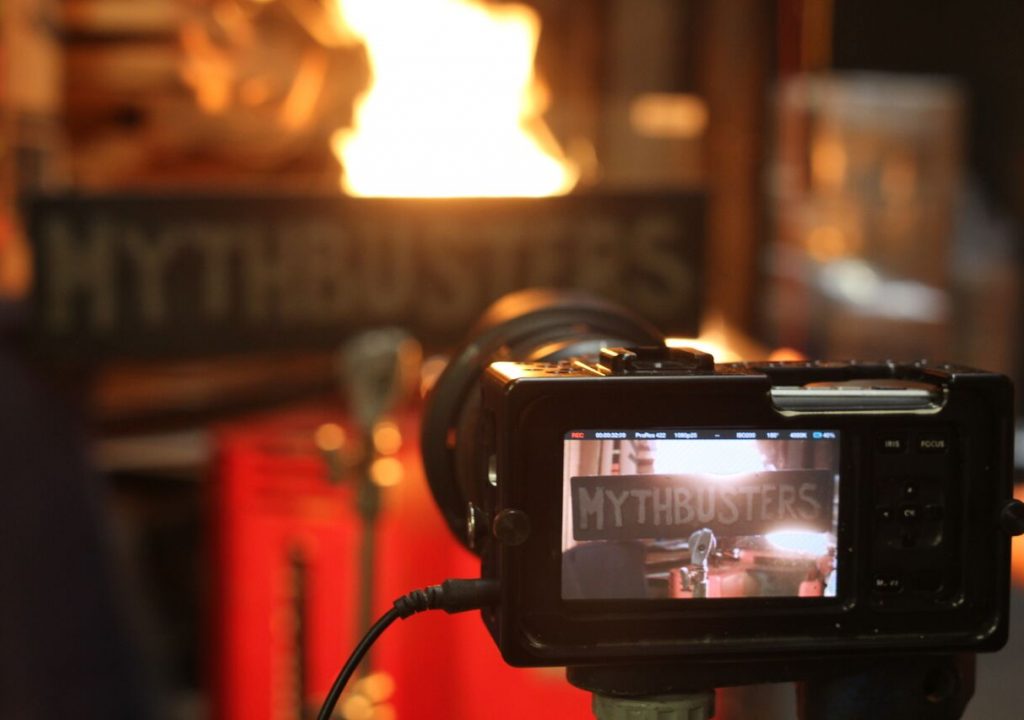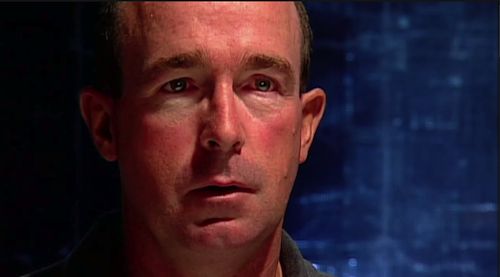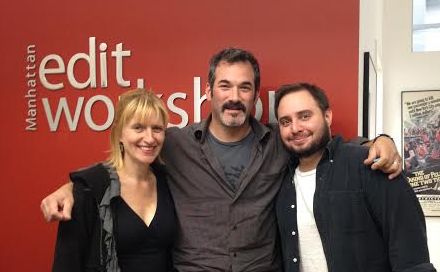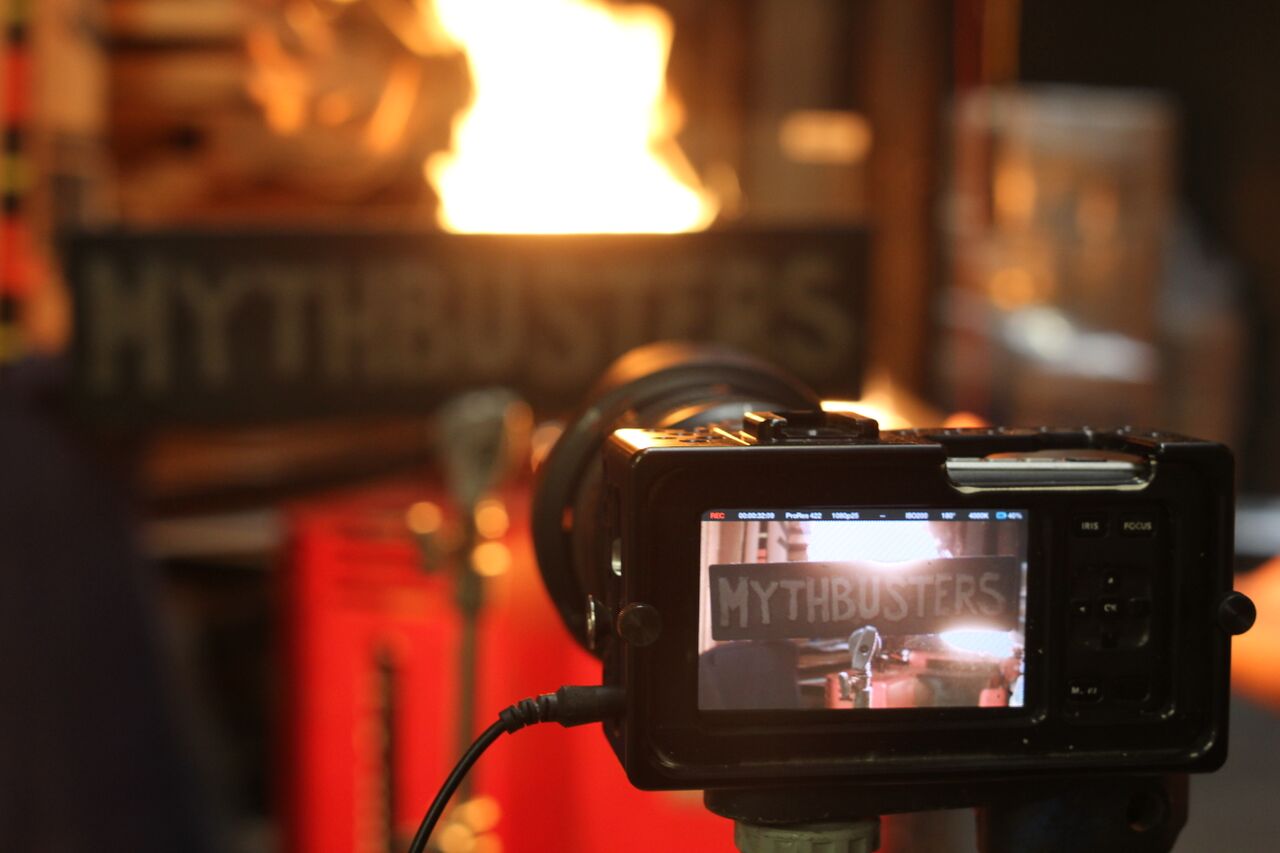
For well over a decade, Adam Savage and Jamie Hyneman have been busting myths on their Discovery Channel program, Mythbusters, to critical and audience acclaim. A few of the myths they’ve confirmed, busted and tested have centered around the plausibility of escaping from Alcatraz, whether you get better gas mileage in a truck with the tailgate up or down and whether or not a person can actually dodge a bullet after it has been fired at them.
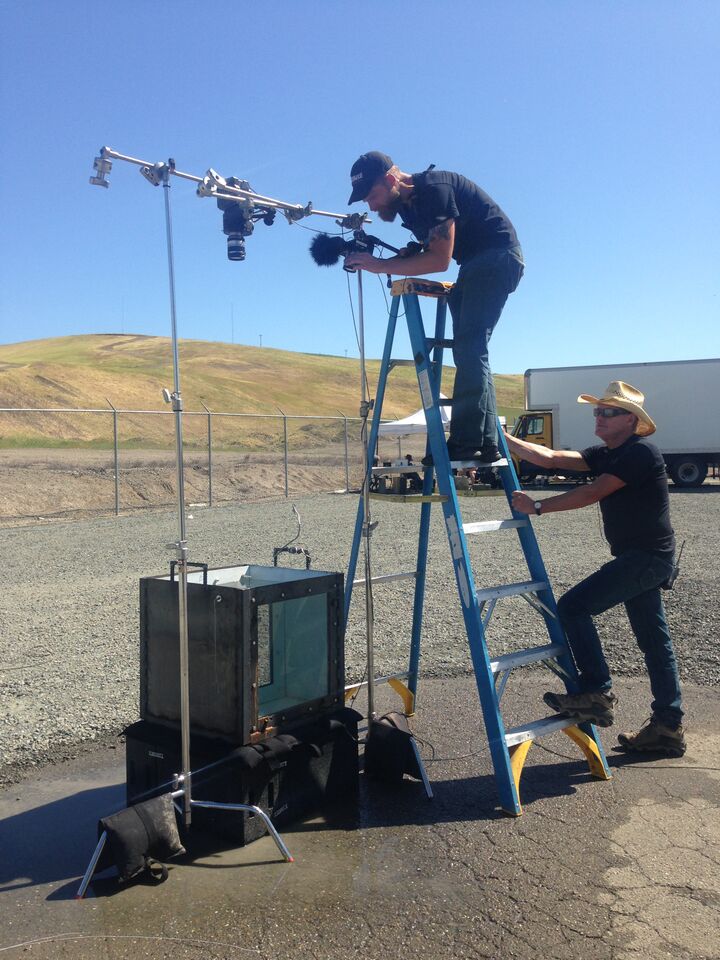 Scott Sorensen has been behind the camera for many of those episodes, having worked on the crew for almost ten years. He is currently the DP for the show, and works with people on both sides of the camera to achieve the look and feel that has helped make the show a mainstay both on the Discovery Channel and in pop culture.
Scott Sorensen has been behind the camera for many of those episodes, having worked on the crew for almost ten years. He is currently the DP for the show, and works with people on both sides of the camera to achieve the look and feel that has helped make the show a mainstay both on the Discovery Channel and in pop culture.
In lieu of the shows return, we talked with Scott about what viewers can expect from the upcoming season as well as the details around some of the equipment they use, how he got started with the crew, what they’ve customized behind the scenes and plenty more.
ProVideo Coalition: Tell us about your career and how you got started working with the Mythbusters crew.
Scott Sorensen: Believe it or not, it all stemmed from a posting on Craigslist.
I was a few months out of school at UC Santa Cruz, and I saw they posted an ad for a production assistant. I responded to it and joined up with the crew, and I worked as a PA for a few months. Their high-speed camera operator left, so I started shooting high-speed camera and did that for a few years. Then I started operating, and I’ve been the DP since the start of the last season. By the end of this season it’ll be 9 years.
It’s a total fluke thing, but our entire camera department started as PA’s and interns. It’s kind of neat though, because I don’t know of any other team that’s like that.
How did your perspective change around what you were doing as you went from position to position?
So much of it has been a continual learning process. There are things I rely on as a DP that go back to my days as a PA. My responsibilities have changed, but the ultimate goal is the same, and it’s been amazing to see and be part of so many of those the elements. Experience is the ultimate teacher, and what I’ve learned in one position is always going to be relevant elsewhere.
Also, being around our hosts and seeing them solve problems has affected the way we do things. We’ve got a shoot coming up where we need to put a camera inside a very hot space for an extended period of time. We’re talking 200-300 degrees in this space. We want to get a GoPro in there, so we needed to come up with a camera housing that would allow us to get the shot we needed before the camera shut down.
Does that experience and perspective factor into the look you want to establish for a given episode or shot?
The show has been going on for 13 years now, and I think each shooter that has been on the show has had their own sensibilities.
Actually, for the longest time, all of the operators were Australian, and they claim that Australian shooters are different than American shooters, and naturally, they say Aussie shooters are better than American shooters. Leaving that aside, much of the crew learned under them, so there is a natural tendency to shoot the way they shot. At the same time though, everyone brings their own sensibilities to the table, and the priority is to make sure what we’re putting together makes sense for the show as a whole. That’s the real focus.
Also, Adam and Jamie will often have ideas for shots that we wouldn’t have thought of, and we’re often considering shots that we think are impossible, and they’ll help us figure out a way to make them happen.
It’s very cool to hear Adam and Jamie are working at that level with the crew. In what specific ways do they get involved?
We’ll often be setting up cameras where we’re doing a test, which usually means we’re blowing something up. We have an idea of what’s going to happen, because after being around this kind of stuff for so long, you get to a point where you know what kind of damage 5 pounds of C4 is going to look like. Even so, we always go to Adam and Jamie to ask what they think is going to happen. The guys have a really good sense of where we need to setup to ensure we won’t miss anything that we wanted to capture. Sometimes we’ll setup a camera and they just go, “ohhh…you don’t want to put the camera there.” They’re very helpful in that way.
Despite their different approaches, there is a very practical nature to the way Adam and Jamie approach solving a problem. Does that mentality spill over into other aspects of the production?
They’ve influenced the way we all work because many of the techniques they use apply to us. Ultimately, they’re out there solving problems, and that’s a skill we use when the camera is rolling just as often as it is when we’re setting up or talking about our next step.
I won’t say that we’ve become builders, because we’re camera operators, but you can’t be around these guys and not be influenced around their approach. It happens without even thinking about it.
Let’s talk about the gear. What cameras are you using?
We’ve got a number of different cameras. The main cameras that we use for most of the documentary-style follow around shots are done with a Sony PDW-70. It’s an ENG camera, 2/3 sensor, and an old workhorse. Our primary second camera is the Blackmagic Pocket Cinema Camera. We have 10 of those that we’ll setup for a given test, which allows us to capture info from almost every angle.
For instance, we did a test where we were looking to bust something that happens on the series finale of Breaking Bad. I don’t want to spoil anything for anyone who hasn’t watched the episode, but we test the practicality of the way a certain weapon is used. Anyone who has seen the episode will know what I’m talking about.
For a test like that, there are certain places we don’t want to be, because there is the potential of being seriously injured, so what we’ll do is we’ll setup our Blackmagics all around the area to get the angles we need. We’ll use anywhere from 3 to all 10 of the cameras depending on the size of the test and what kind of outcomes we’re expecting. Sometimes we don’t necessarily know what’s going to happen, so we have to cover ourselves to make sure we can tell the story and make sure we can get info from the footage to know the result of the test.
We also will throw a GoPro in a dangerous spot, so we’ll mount them to the barrel of a gun or on a car that’s smashing into a wall. GoPro’s are always the closest cameras to an explosion.
We’ve also got a couple Sony FS700’s that we’ll do quick high-speed shots with. Our primary high-speed camera is the Phantom v12.1.
And what about your production gear? Anything you’ve customized or built?
We’ve got a gimbal, which is the DJI Ronin, and in the last few months we started using the DJI Inspire 1 for some aerials. That’s been really great. It’s a fantastic tool that’s probably smarter than all of us. Adam has a small steadicam, and we’ll play with that occasionally, which is a lot of fun.
In terms of gear that we’ve built, we’ve put together a lot of blast housings in our day. We had some roughs times back in the bad old days of HDV tape. Our primary second camera used to be the tiny Sony Handycams. In the HDV days, you’d setup a shot and something would blow up, and the shockwave would hit the camera, which would disrupt the tape deck. That was fine if you were recording regular old DV, because when the DV tape deck gets knocked out, the shot falls out when the camera goes out. But with HD, there was a 14-frame buffer. So it was 14 frames behind the action. We’d watch the footage of something that was about to blow up, and all of the sudden the shot would go to blue, and then when it came back, there would just be dust. We would have to make these housings that compensated for that, because we knew they couldn’t take any sort of shock. We used to make these massive houses out of aluminum tube that was two parts foam, and we had a little sled for the camera to sit in, all in an attempt to get the shot we needed. Things have gotten a bit easier as cameras have gotten more durable with solid-state media.
That said, as I mentioned, as we just built the housing for the camera that’s going into a very hot space. Also, about a year ago we built what I’d call a poor man’s bullet time rig. We don’t have enough cameras to do full on bullet time, so we went out and bought a circular lighting truss, built an aluminum sled with a powerful electric motor so we could get the sled going really fast in a circle and threw a high speed camera on there. It actually gave us a respectable bullet time effect.
That stuff is fun, and we have access to the shop and the brain of two amazing builders.
How do your cameras affect the way in which an episode is composed and plays out?
If we don’t have the angles we need, we don’t have a show for the audience, and we don’t record the info we need to test out these myths.
If something explodes and it sends a chunk of relevant info into the air, we need to see how high that goes, we need to see where and how it takes off along with countless other details. If we don’t, we haven’t told the story properly for the TV show, but it also means we don’t get the scientific data that we need to come to a conclusion. And the whole point of the show is to break these myths down and figure out how much truth they do or don’t contain.
What sort of versatility do the Pocket Cinema Cameras offer?
We’re using them in every way you can. They’re going in cars, or being left out in the sun to film what will end up being a time lapse. They haven’t let us down and have been totally reliable.
Just about a month ago we filmed Shark Week for this year, and that was a chance to take the BMPC’s underwater, and they worked like a champ. They were quite a bit nicer than our old underwater cameras, because the layout is so nice and straightforward that you can do everything underwater that you can above water. You can get to every menu and change every setting. Typically with that small of a camera, you’re going to have to spend thousands of dollars on a housing unit to be able to adjust any of that. They’ve been a really good camera for us.
Anything you can tell us about your upcoming new episodes?
The test of the Breaking Bad finale is coming up in our premiere, and in the same episode we tested the phrase, “blow it out of the water.” So, we tested whether or not you can actually lift a boat up and out of the water using explosives.
That actually inspired a new process for us. We setup the cameras in advance and got everyone set to roll cameras, and then sent in the bomb squad to make the explosives ready to go. For this one, we had two or three misfires, so we ended up sending a couple people out to the cameras while the bomb squad was doing their work, which isn’t something anyone likes to do. From that, we decided we needed a way to remotely view and trigger our cameras so that if we have misfires we can cut the roll from the safety of our bunkers and then we’re ready to go again. That’s something we’re working on now.
It’s a learning process on every side of the camera, eh?
Definitely. Just like the audience, we’re learning something new all the time, and it’s everything from production logistics to the properties of explosives to the most effective way to board an airplane.
Also, we quickly learned to never run to the safety meeting. That’s a big one.
Mythbusters returns to the Discovery Channel on July 18th. Check out some recent videos as well as a Summer Sneak Peek here.

Filmtools
Filmmakers go-to destination for pre-production, production & post production equipment!
Shop Now